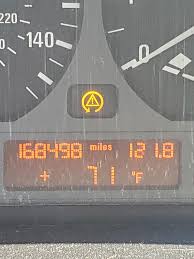
Modern vehicles feature numerous safety systems which help drivers maintain control while minimizing accident risks. The Dynamic Stability Control system, known as dsc bmw, stands out as one of the essential systems for vehicle safety and performance. The advanced technology prevents skidding and improves traction while ensuring better handling during difficult driving situations. Knowing how to activate or deactivate DSC allows drivers to utilize this crucial feature effectively.
What Is DSC in BMW?
Dynamic Stability Control (DSC) represents an electronic system designed to enhance vehicle stability by identifying and minimizing wheel slip occurrences. This system maintains control by automatically adjusting braking force and engine power while continuously monitoring driving conditions.
Drivers benefit from this system when handling slippery surfaces or high-speed conditions where their vehicle could lose traction. BMW’s DSC system maintains vehicle stability and lowers control loss risk during wet surface navigation and sudden turns or emergency responses.
How DSC BMW Works
DSC BMW operates through an array of sensors which track essential driving metrics such as:
Wheel speed sensors determine changes in wheel rotation rates to recognize skidding risks.
The steering angle sensor evaluates the driver’s steering activity and checks its alignment with the vehicle’s real-time motion.
Yaw rate sensor tracks side-to-side movement to recognize instances of oversteering or understeering.
Brake pressure sensors enable dynamic adjustments of braking force during varying driving conditions.
The system triggers the subsequent measures once it senses instability.
The system reduces engine power output to stop wheels from spinning excessively.
The system targets specific wheels with braking force to correct instances of oversteer or understeer.
The stability system enables the vehicle to stay on its chosen course without requiring the driver to take corrective actions.
DSC BMW’s real-time adjustments make it react faster than any human, which establishes it as an essential safety feature.
Key Benefits of DSC BMW
The dsc bmw system delivers numerous advantages that improve vehicle safety while boosting driving performance.
1. Prevents Skidding and Loss of Control
DSC stands out because it possesses the capability to adjust both oversteer and understeer conditions. The system takes control to keep the vehicle on course when excessive speed or slick conditions cause it to slide.
2. Improves Traction on Slippery Roads
DSC BMW maintains better traction on wet roads during heavy rain and icy conditions by preventing wheel slip. Dsc bmw proves essential for safe acceleration from stationary positions and when driving through corners on surfaces with poor traction.
3. Enhances Braking Performance
DSC works together with the Anti-lock Braking System (ABS) to maximise braking efficiency. The system achieves controlled halts during emergencies by applying brakes to specific wheels one at a time.
4. Increases Driver Confidence
DSC BMW provides essential support and stability to drivers which helps them maintain control during challenging road conditions and high-speed driving situations.
When to Turn DSC Off
DSC BMW exists to enhance safety but disabling it can be advantageous in certain scenarios.
DSC may limit wheel spin excessively when driving on deep snow or loose terrain which could make vehicle movement more difficult. Disabling the system temporarily can enhance traction for drivers.
Drivers who seek enhanced control over their vehicle’s performance might choose to turn off DSC to improve their driving experience while competing on closed tracks.
When driving daily it is advised to keep DSC in operation to ensure maximum safety.
Common DSC Problems and Warning Signs
As with all electronic systems dsc bmw may experience operational problems from time to time. Some common signs of DSC malfunction include:
The activation of the DSC warning light usually means there is an issue with the system that requires evaluation.
A potential system fault exists if the DSC fails to activate when the vehicle loses traction.
A defective DSC system may cause unexpected braking or power reduction events.
Potential causes of DSC issues include:
Faulty wheel speed sensors
Low brake fluid levels
ABS module failure
Steering angle sensor misalignment
Drivers should get professional assistance to check the system whenever these problems emerge to maintain safety standards and performance levels.
Final Thoughts
DSC BMW serves as a vital safety component that improves vehicle stability and handling while preventing skidding across different driving conditions. The system ensures improved driver confidence and road safety by making automatic adjustments to power and braking. Drivers should keep DSC activated during regular driving because it provides maximum safety protection. Knowing the operation of DSC and ensuring its proper functionality greatly impacts vehicle safety and the driving experience.